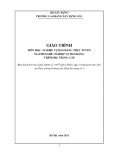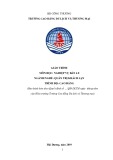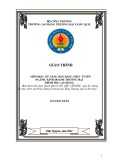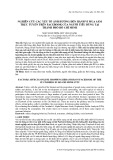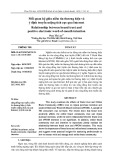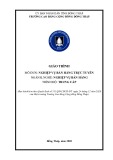
http://www.iaeme.com/IJM/index.asp 36 editor@iaeme.com
International Journal of Management (IJM)
Volume 10, Issue 4, July–August 2019, pp.36–43, Article ID: IJM_10_04_005
Available online at http://www.iaeme.com/ijm/issues.asp?JType=IJM&VType=10&IType=4
Journal Impact Factor (2019): 9.6780 (Calculated by GISI) www.jifactor.com
ISSN Print: 0976-6502 and ISSN Online: 0976-6510
© IAEME Publication
IMPACT OF SECURITY AND PRIVACY ISSUES
IN INTERNET MARKETING-A STUDY.
Koppisetti Durgabhavani
Research Scholar, Bharathiar University, Tamilnadu, India.
Dr. A. R Krishnan
Faculty of Management, SRM IST, Chennai, India.
ABSTRACT
Purpose of the study is to analyze security issues which have an impact on the online
shopping buying behavior of the customer. Also highlights the factors which helps in
retaining the online customer. The survey is conducted with 175 consumers. A
Questionnaire was designed with 5 points Likert scale (Strongly agree - 1 to strongly
disagree – 5) and ranking. The article also focuses on the relationship and the
significance between securities versus online purchasing. For effective analysis,
statistical tools like factors analysis and correlation test are performed.
Keywords: Digital market – privacy – security – risk – risk reduction.
Cite this Article: Koppisetti Durgabhavani and Dr. A. R Krishnan, Impact of Security
and Privacy Issues in Internet Marketing-a Study, International Journal of Management,
10 (4), 2019, pp. 36–43.
http://www.iaeme.com/IJM/issues.asp?JType=IJM&VType=10&IType=4
1. INTRODUCTION
The term privacy includes both ethical and legal aspects. Privacy was coined in twentieth
century. The reason for the emergence of this term in online business is due to the increase in
the usage and adoption of internet in public life as well as in developing businesses has led to
a phenomenal rise in online shopping. Even though there is a increase in the population of
online customers it always accompanied with a threat of personal information being shared and
it seems to be one of the hindrance, which prevents customers from shopping online. This
article mainly focuses on the security and the privacy related issues of the customer shopping
online.
2. LITERATURE REVIEW
2.1. Introduction to e - commerce
Electronic business generally interpreted as e-business or internet business, it can also be
defined [1] as a support to all activities carried in a business. E-business was initially coined by
IBM’s marketing and internet team in 1996. These methods are efficient and flexible in linking
company’s internal and external data processing systems. Also ensures a better working







